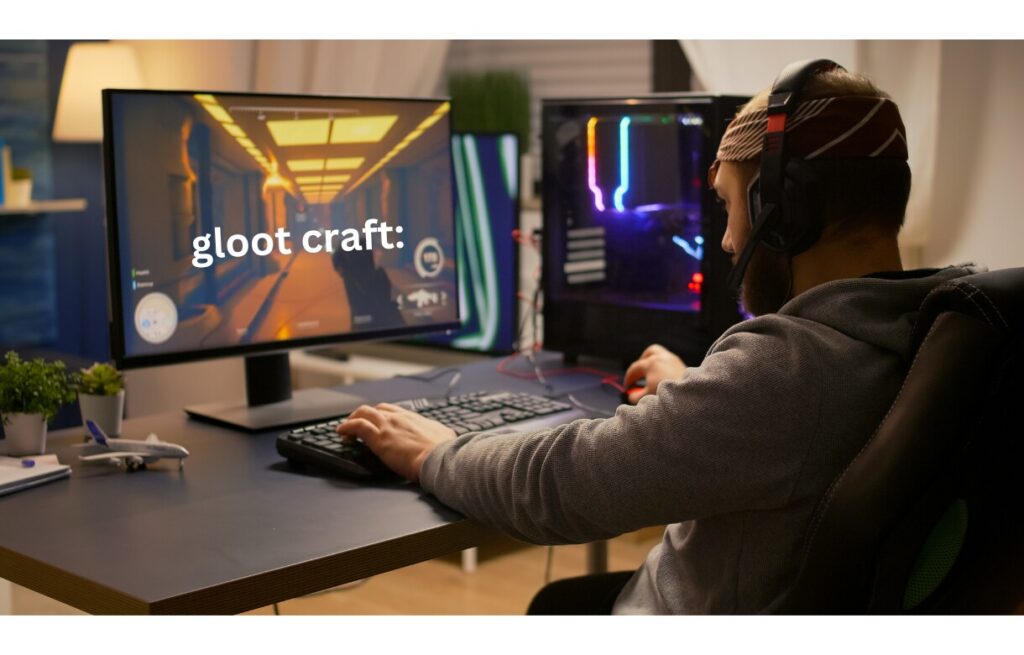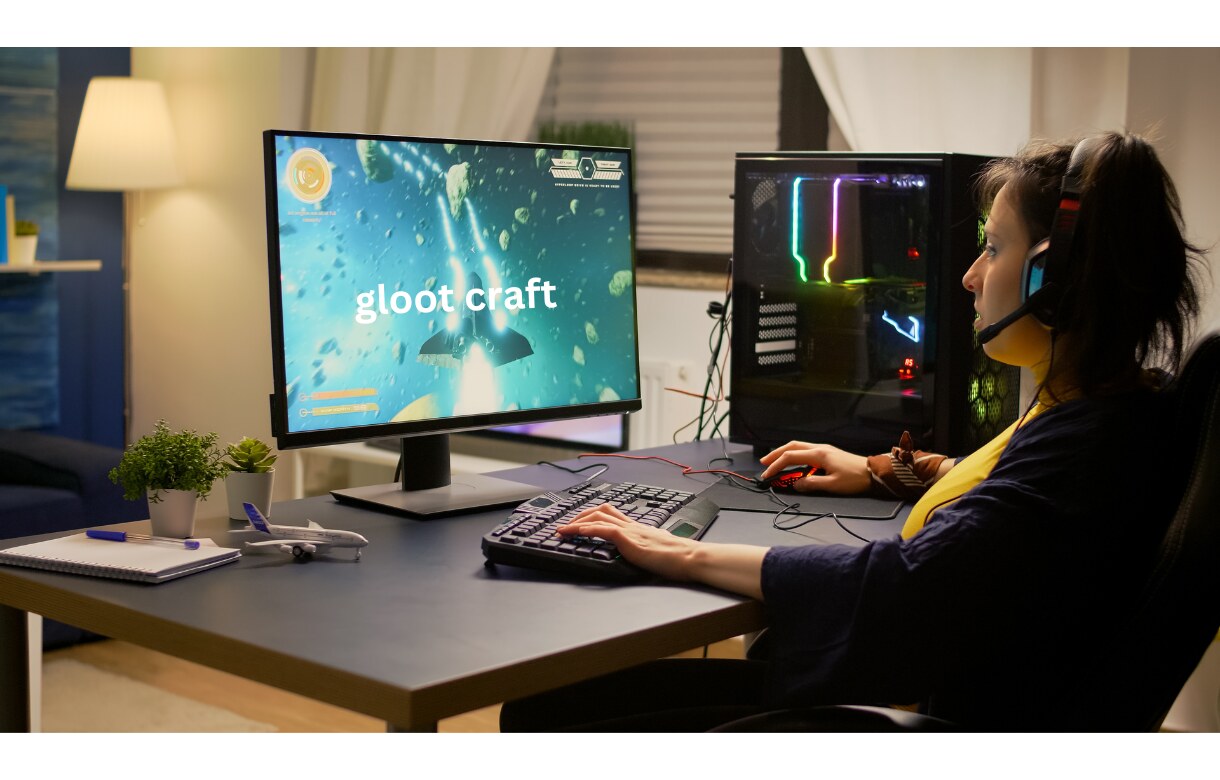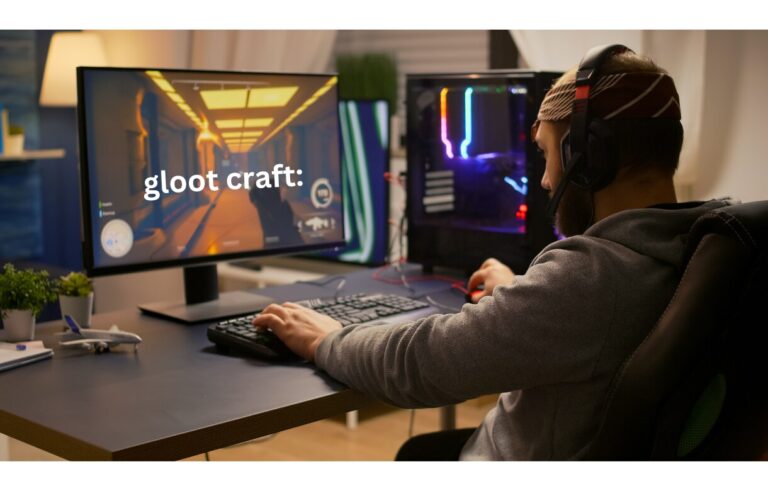
gloot craft
In a world driven by automation and mass production, craftsmanship stands as a cherished counterpoint to the impersonal nature of modern manufacturing. Enter gloot craft, an emerging movement that blends tradition with technology, redefining how we perceive handmade artistry. If you’re wondering what makes it so unique and why it’s capturing the imagination of creators and consumers alike, buckle up. This article dives into its origins, key traits, tools, and why it’s creating waves across industries.
The Origins

Gloot Craft takes its inspiration from a deep respect for artisanal traditions while skillfully blending modern innovations. The term “gloot” comes from the Old English word glēot, symbolizing ingenuity and craftsmanship. Over time, artisans have consistently evolved their crafts, adapting to changing tools, materials, and cultural needs.
As the 21st century unfolded, the world of craftsmanship faced a critical crossroads. Artisans had to either compete with impersonal, mass-produced goods or embrace innovation to stay relevant. Gloot Craft emerged as the solution, creating a harmonious blend of time-honored creativity and cutting-edge technology. By adopting tools like 3D printers, laser cutters, and sustainable materials, it revolutionized the concept of making.
This movement not only celebrates the timeless beauty of handcrafted work but also integrates precision, efficiency, and environmental consciousness into the creative process. As a result, its redefined what it means to create, offering a pathway where traditional artistry and technological advancement coexist seamlessly. This approach honors the past while paving the way for a sustainable, innovative future in craftsmanship.
What Defines Gloot Craft?
At its core, its masterfully combines traditional handcrafting expertise with state-of-the-art technology, forging a remarkable harmony between age-old artistry and modern precision. This forward-thinking movement not only respects the legacy of craftsmanship but also redefines it by introducing fresh dimensions of personalization, sustainability, and innovation.
When it comes to customization, Its offers a transformative approach. Unlike the uniformity of mass production, it empowers creators to craft distinctive, one-of-a-kind items tailored to individual tastes and needs. As a result, the crafting process becomes an intimate and highly personal experience.
Moreover, sustainability plays a central role in Gloot Craft’s ethos. Beyond fostering creativity, it prioritizes ethical practices by ensuring materials are responsibly sourced and waste is significantly reduced. This commitment aligns perfectly with the growing demand for environmentally conscious solutions, making Gloot Craft a responsible choice for the modern era.
Finally, the integration of advanced technology sets Gloot Craft apart. Through tools such as digital design software, 3D printers, and CNC machines, artisans unlock extraordinary levels of precision and innovation. Despite these advancements, the authentic essence of handcrafted artistry remains intact, preserving its soulful charm.
These standout features position Gloot Craft as a groundbreaking frontier, blending creativity, sustainability, and progress in perfect unison.
Several Vital Characteristics
What makes Gloot Craft stand out? Let’s break it down:
- Authenticity
Every piece tells a unique and compelling story, blending tradition with innovation. For instance, consider a handcrafted necklace featuring a 3D-printed clasp or a wooden table adorned with intricate, laser-etched patterns. These creations embody a level of personalization and craftsmanship that simply cannot be replicated by mass-produced goods, making each item a treasure with emotional and artistic value.
- Functionality Meets Aesthetics
Gloot Craft doesn’t just look good; it works beautifully. Products are designed to serve real purposes while maintaining an artistic flair. - Accessibility for Creators
With advancements in affordable tech, more creators can experiment with Gloot Craft. You don’t need a massive workshop—just creativity and a willingness to learn. - Collaborative Spirit
Its fosters collaboration between tech enthusiasts, traditional artisans, and even hobbyists, creating a vibrant community of makers.
Applications
You might wonder, “Where is Gloot Craft making an impact?” The answer: everywhere!
1. Fashion and Accessories
Designers harness the power of Gloot Craft to revolutionize bespoke creations, blending traditional craftsmanship with innovative techniques. Picture custom earrings crafted from eco-friendly, 3D-printed bio-resins, seamlessly combined with hand-polished, intricately detailed metals.
2. Interior Design
From intricately carved furniture to home décor, Gloot Craft is revolutionizing how we personalize living spaces. Imagine having a coffee table designed exactly to your specifications, blending machine precision with handcrafted elegance.
3. Prototyping and Product Design
Innovators use Gloot Craft techniques to create prototypes that look and function like finished products, bridging the gap between idea and execution.
4. Education and Workshops
Institutions worldwide have begun offering Gloot Craft workshops to teach a new generation of creators how to combine traditional skills with emerging tech.
The Tools and Technologies
Its wouldn’t exist without its impressive toolkit. Here’s what powers this movement:
- 3D Printers
These machines bring ideas to life layer by layer, whether it’s a complex sculpture or a functional product component. - Laser Cutters
Precision is the name of the game. Laser cutters allow artisans to create intricate patterns and designs on wood, metal, and even leather. - CNC Machines
These computer-controlled tools help carve or engrave materials with unparalleled accuracy. - Digital Design Software
Tools like Blender, Adobe Illustrator, and CAD software let creators visualize and tweak their designs before production. - Eco-Friendly Materials
Many Gloot Crafters use biodegradable plastics, recycled metals, and sustainably sourced woods to reduce their environmental impact.
Why Gloot Craft Is Gaining Popularity
There’s a good reason why it has grown from a niche trend to a global phenomenon.
- Uniqueness
People love owning products that feel special because they add a sense of individuality and connection. Gloot Craft fulfills this desire by creating fully customizable designs, blending modern techniques with traditional craftsmanship. As a result, customers enjoy unique, meaningful items that reflect their personal style.
- Eco-Conscious Consumerism
With increasing awareness about environmental issues, more buyers are seeking sustainable products. Gloot Craft fits perfectly into this mindset. - Cultural Renaissance
Many see it as a return to valuing human creativity in an age of mass production. It’s a way to reconnect with our roots while embracing modern advancements. - Affordability of Tools
As technology grows more accessible, its empowers aspiring makers by providing user-friendly tools and platforms. This accessibility not only simplifies the creative process but also encourages innovation. Consequently, individuals from diverse backgrounds can confidently explore crafting, turning their unique ideas into tangible, high-quality products.
Challenges
Like any growing movement, Gloot Craft faces its share of hurdles:
- Steep Learning Curve
Combining traditional skills with advanced technology isn’t easy. Makers often need extensive training. - High Initial Costs
While tools are becoming more affordable, acquiring high-quality machines like 3D printers or CNC routers can still be pricey. - Balancing Tech and Tradition
Purists argue that adding technology dilutes the authenticity of handmade products. Striking a balance is essential. - Scalability Issues
Custom, small-batch production isn’t always viable for businesses looking to scale rapidly.
The Future
The future of Gloot Craft shines with limitless potential. With groundbreaking advancements in AI, augmented reality, and sustainable technologies, it’s entering an exciting era of innovation. For instance, envision virtual reality workshops where artisans collaborate seamlessly across continents or AI-powered tools that enhance speed and precision while retaining a deeply personal creative touch. Furthermore, as these technologies become more accessible, they will empower a wider audience to engage in craftsmanship, breaking down traditional barriers to entry. This evolution promises to redefine entire industries, seamlessly merging art with engineering, and sparking a revolution in how we approach design and creation.
Conclusion
Gloot Craft isn’t just a trend; it’s a revolution. By blending traditional artistry with modern technology, it celebrates the best of both worlds. Whether you’re a consumer who values uniqueness or a creator eager to explore new horizons, there’s something in Gloot Craft for everyone.
The movement is still in its early days, but it’s clear that it’s here to stay. So, roll up your sleeves, fire up that 3D printer, or grab your carving tools—it’s time to craft the future!
FAQs
1. What exactly is Gloot Craft?
Gloot Craft is the art of merging traditional handcrafting techniques with modern technologies like 3D printing, laser cutting, and digital design.
2. Is Gloot Craft environmentally friendly?
Yes! Many Gloot Crafters prioritize sustainable materials and eco-conscious production methods.
3. Can beginners try Gloot Craft?
Absolutely! With affordable tools and online resources, anyone can start exploring Gloot Craft.
4. What industries benefit most from Gloot Craft?
Fashion, interior design, product development, and education are just a few areas thriving thanks to Gloot Craft.
5. Where can I learn more about Gloot Craft?
Check out online courses, maker spaces, or join local crafting communities to dive into the world of Gloot Craft.




